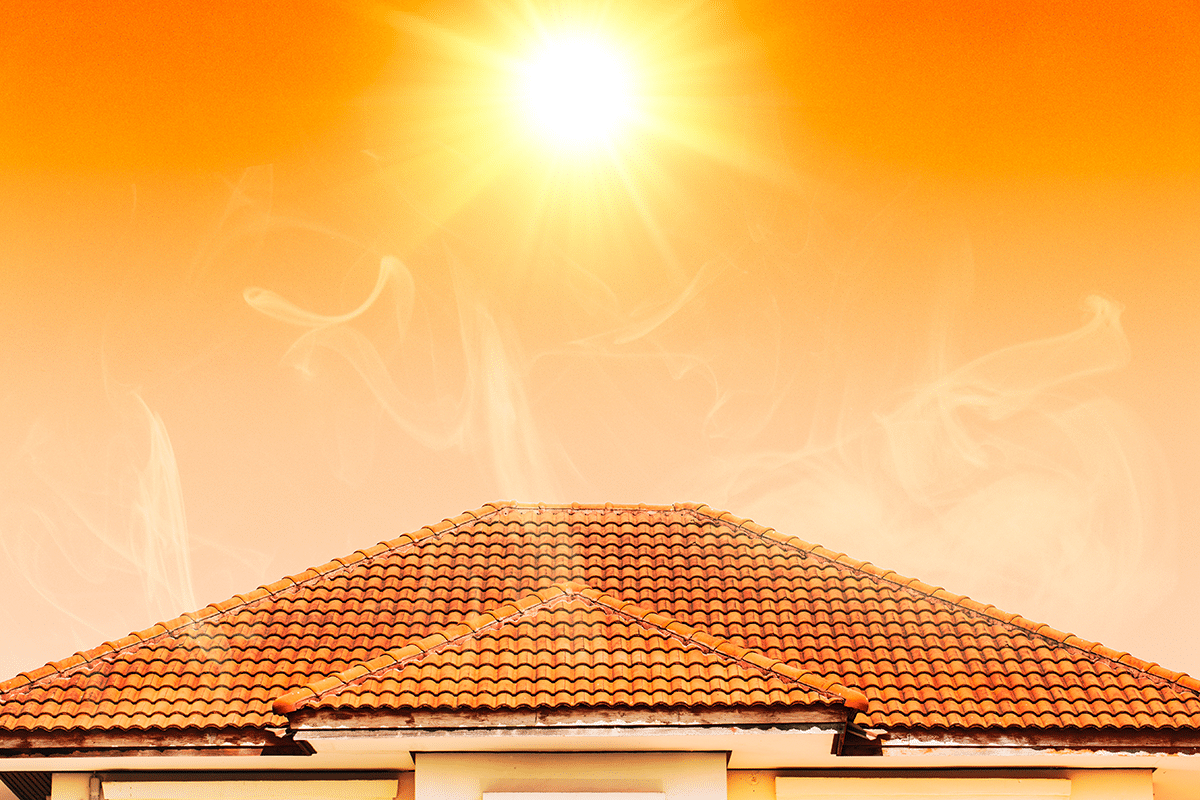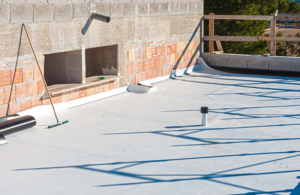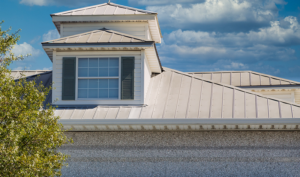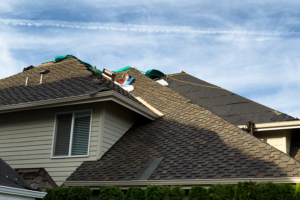The summer months keep getting hotter every year. The eight warmest years on record have now occurred over the past decade. Hot temperatures can cause high energy bills and problems for your roof and home. Staying cool this summer doesn’t mean you have to pay a fortune to keep the air-conditioning running day and night to prevent roof damage. We have some actionable tips for quick fixes to your energy systems. Reducing the heat on your roof will help provide energy savings. These energy savings will allow for more extended wear, reduced load on your HVAC system, and help reduce the overall ‘heat island’ effect on your property in the heat of summer.
Set The Thermostat Higher
When you set your thermostat higher, your HVAC system will use less energy during the cool-down period of the day than if you leave it running at a lower setting all day. It is a good rule of thumb to run 76 degrees during the day and then decide on an optimal sleep temperature. Most people find comfort in the 70 – 72 degree range for nighttime sleep.
Reduce Attic Heat
The temperature in your attic can reach 150 degrees on a hot summer day, a situation that, if left unchecked, can drive up cooling costs by as much as 40 percent.
If your attic has less than R-22 insulation, 7 inches of fiberglass or rock wool, or 6 inches of cellulose — you should consider adding more attic insulation. The U.S. Department of Energy says most homes should have between R-22 and R-49 insulation in the attic. To check what’s suitable for your region, go to the Department of Energy website and get your recommended insulation rating.
It is also essential to make sure your attic is well ventilated. Gable vents can lower attic temperatures by about 10 degrees, while a ridge-and-soffit ventilation system can reduce attic temperatures very close to ambient outdoor temperatures.
A temperature-controlled attic fan in conjunction with soffit vents is the most effective means of keeping your attic space at an ambient temperature. Attic fans can be directly wired to your electrical grid or solar-powered with very low operating costs.
Use a Fan
A fan, which costs two to five cents per hour to operate, will make a room feel 4 to 6 degrees cooler. Fans also work well in tandem with an air conditioner because the dehumidifying action of the air conditioner provides drier air that the fan can then move around. Fans can even help in winter seasons to even out the ambient temperature.
If nighttime temperatures drop into the 70s where you live, you might want to purchase a whole-house fan. Whole house fans run at night with the windows open. The whole house fan will pull cool air into the house as it vents hot air through the attic.
Practice “Texas Cool”
“Texas cool” is a morning and evening routine that takes advantage of cool outdoor temperatures at night and keeps the heat at bay as much as possible during daylight hours.
It’s very simple to do: At night, when the temperature drops, open windows and bring in cool air with window fans or a whole-house fan.
Use Sun blockers
As much as 20 percent of summer heat enters your home as sunlight shining through windows. To cut “solar gain,” add curtains or blinds to rooms that get direct sun and draw them in daylight hours.
Cook Smart
Any appliance that generates heat adds to your cooling load. An oven baking cookies can quickly raise the room temperature 10 degrees, which can escalate your overall cooling costs by 2 to 5 percent. It is also good to run the dishwasher and clothes dryer at night and be sure the dryer is vented to the outside to reduce heating.
Seal Air Leaks
The places where cold air infiltrates in winter are routes for hot air in summer. Hot air is often accompanied by high humidity, making you even more uncomfortable and stressing the temperature and energy of your home.
Protect Your Roof
There are several minor steps for roof maintenance you can take to make sure you do not have to deal with significant roofing repair work. If you notice any issues on or around your roofing system, it is a good idea to get it checked out as quickly as possible to minimize possible damage.
Attic Maintenance
Check that your attic and crawlspaces have proper ventilation, intake vents and exhaust vents are free from debris, and all fans are working as they should. Remember that an attic space can become dangerously hot in the summer heat, so be hydrated and limit your exposure time in a hot attic.
Shingle Maintenance
If you have asphalt shingles or a tile roof, close-up inspections should be left to the pros for safety reasons. You can take a lap around the property and see if you can spot any problem shingles from the ground before you request an initial inspection. Thermal shock from summer storms is another force that can damage shingles. You can look for issues such as discoloration or fading, cracked, warped, or curling shingles. These examples are evidence of thermal shock to your roof and can cause areas where shingle damage compromises your roof. If you notice problems with any of these areas, it is always important to act quickly so our specialists can resolve the issue right away. We can also provide you with regular roof inspections to give you constant peace of mind knowing that your roof is in excellent condition. After a roof inspection from a roofing professional, you will get a roof-ready evaluation detailing the state of your roof and any future problem areas.
Consider A Green Roof.
One of the best ways to keep the roof cool is by growing a rooftop garden with green grass and potted plants. The green roof shades the building from direct sunlight, while the mud within the potted plants and the plants themselves absorb most of the heat that hits the rooftop.
When you decide to build a roof garden, make sure that the roof has proper waterproofing to prevent any water seepage through the external walls or roof slab. Runoff and seepage may cause damage to the building.
Paint the terrace and roofing material white when you are done to get more reflection and less radiant heat for your green roof.
The heat gain from the summer sun can be reduced by turning the roof into a reflective roof surface. Paint with cool, light-colored roof paints that provide thermal insulation by reflecting the sun’s rays and keeping the indoors cool, which brings additional energy efficiency.
Add Shade Trees
Keep, maintain, and protect any large shade trees when possible. These trees significantly reduce the amount of solar radiation reaching your roof and the ‘heat island effect of your property in general. Find places on your property to add shade trades that will help block the sun for significant parts of the day.
Go For Heat-Resistant Materials
Patio and decking materials such as wooden deck tiles or terracotta tiles do not absorb or transfer as much heat like other materials. This serves the lower floors and outside decks near the house to be comfortable to walk on, even during the peak summer heat.
Cool roof tiles and shingles can help reflect most of the solar heat. These protective coatings also reduce costly repairs and even prevent a roof replacement from heat damage. Standard roof shingles can undergo thermal shock when they become very hot and rapidly cool during a rain event. Extreme temperature and humidity fluctuations are damaging to the singles and can result in a leaky roof. Heat-resistant tiles work as an insulator that prevents heat from entering the top floor rooms. Most metal roofs come with a reflective coating, so you dont have to worry about extra tiling on those.
Install solar panels
Alternatively, one can cover the roof with solar panels. The solar panels comprise photovoltaic cells and block the heat from hitting the roof. Solar panels capture the sun’s energy and convert it into electricity while protecting your roof base from heat and other damaging factors. By mounting solar panels on your roof you are adding an extra layer of protection to your roof base.
RESOURCES
Blue Nail Roofing has a Master Elite contractor status awarded by the largest roofing manufacturer in North America, GAF. Only 2% of contractors in the U.S. meet the rigorous standards to achieve this status, which means you can be assured you are making a good choice selecting the professionals at Blue Nail to execute your home and business roofing repairs. Call today to schedule a professional evaluation!
Copyright © 2020 Blue Nail Enterprises. All rights reserved. | Privacy Policy
Let Us Nail Your Project!
Please send us a little information about your roofing or home improvement needs, and an expert will reach out shortly.







